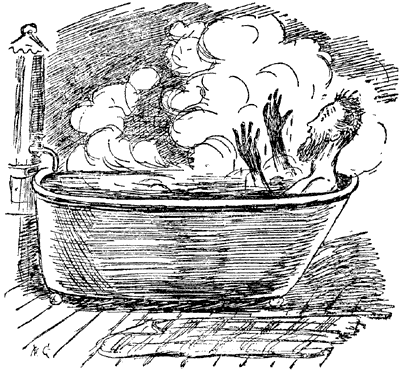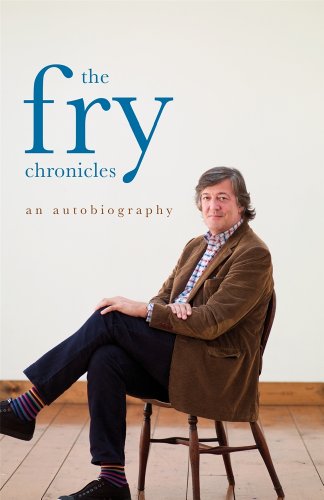Last week I blogged about the Christmas trade in celebrity memoir, and by coincidence or serendipity, last Friday’s Guardian Books podcast contained a segment on the genre. In it, Claire Armitstead interviews John Harris, a Guardian writer whose recent article in the G2 pitted ‘sleb tome against ‘sleb tome, seeking (with tongue in cheek) the ultimate celebrity memoir. Harris is asked (in a somewhat leading fashion) whether the quality of these works is responsible for their falling sales; he replies in a familiar strain: “I would like to think, having now read close to twenty of these things, that […] the penny is starting to drop with the reading public and they’re realising, by and large, what an awful, awful thing these are and therefore stepping away.’
So much for the sympathetic stance of the Guardian described in my last post. But are they really ‘awful, awful’ things? And will reading them really drive you mad (as Harris claims earlier in the podcast)? I have already suggested that the press coverage ‘enjoyed’ by celebrity memoir, with its refusal to recognise the legitimacy of the form, is steeped in literary snobbishness. But might this stance be justified? To answer these questions, I’ve had to delve beneath the (celebrity memoir) covers…

This last week I’ve been casting an eye over Dawn French’s bestselling 2008 memoir, Dear Fatty. In terms of viewing celebrity memoir as a Christmas trade -- as a cynical, money-making collusion between ‘star’ and publisher -- this title seems to fit the bill and adhere to stereotypes. In April 2007, The Sunday Times reported that a bidding war had broken out, with publishers fighting over French’s then unwritten memoir. A week later, it reported that £2 million had been paid, with Century (part of Random House) winning the battle. Dear Fatty was also a popular success, selling more than 344, 857 copies by 6 December 2008 -- something sure to raise the hackles and suspicions of the literary establishment.
I freely confess to being surprised by Dear Fatty. First of all, it demonstrates a sophisticated awareness of genre, its limits and traditions. French resists the linear, Bildungsroman plot of much autobiography, and rejects this as a label for her work: “I have decided to think of this book as a memoir rather than an autobiography” (ix). Now, “memoir” is the term most commonly applied to celebrity works -- and it is also the description I have used, for the sake of clarity. However, one suspects that memoir is often applied in a derogatory sense, suggesting an inability to reach and attain the dizzy heights of autobiographical aesthetic unity and coherence. But French embraces the fragmentary, the disruptions to chronology, the biases associated with memoir. Rather than tell her story in a logical, ordered fashion, she will focus instead “on those memories that are especially important or vivid to me. The parts of my life I can still remember the taste and feel and smell of” (ix) [1].
These stand-out moments, encounters and events are narrated, not in flowing retrospective prose, but in a series of letters to various significant others: mother, dead father, brother, niece, daughter, old boyfriends, Jennifer Saunders, Lenny Henry, etc. Each letter assumes a different audience, and thus necessitates a different performance -- a different epistolary self (to borrow a phrase from life-writing theory). Letters to the absent father, who committed suicide when French was just nineteen, strike a plaintive, melancholic note without recourse to cloying sentiment or indulgent prose. Letters to ‘Fatty’ (French’s nickname for Saunders and a playful sleight of hand undermining reader’s expectations, the common assumption that ‘Fatty’ is French herself), by contrast, adopt an intimate and confessional tone, something akin to a (jocular) therapist’s couch. Interrupting this succession of relational selves, where each addressee shapes the autobiographical subject, is the occasional comic letter, including several to Madonna (who never agreed to appear io a French and Saunders show), fan-mail to David Cassidy and the Monkees, and an application form “to become a lifelong friend and loyal admirer of Liza Tarbuck” (205). As a reader, I felt these moments jarred; they seemed contrived, a forced attempt to reintroduce French’s public, comic persona. But again, they demonstrate a controlled playing with genre: the blurring of fact and fiction, injecting moments of levity and displacing the act of self-representation. These comic set pieces enable a pause for breath before the next letter, the next addressee and the next “important or vivid” moment.
One further surprise was the understated revelation of Dear Fatty. Where press coverage of celebrity memoir had led me to expect a voyeuristic reading experience -- replete with showbiz gossip, family secrets and ‘kiss and tell’ -- I found instead a tempered reticence. As one might suspect, letters to French’s father are raw and emotive, frequently returning to the subject of his early death and long absence. But they do not dwell or revel in the details of his suicide. When French tackles the subject, about half way through the book, her account breaks down; it fractures into questions, thus rescuing her from the task of narrating the act. But while attention is diverted onto the impact and aftermath, frightening glimpses remain: “Did you weep? Did we cross your mind? […] Did you pray that someone would knock on the car window at the very last moment and drag you out?” (216). As such, the memoir exercises a restrained exposure, a delicate balancing act between private hurts, intimate experience, and the public narration of a public persona. It follows that readers hoping for a behind-closed-doors exposé of French’s marriage to Lenny Henry and his rumoured infidelities will be disappointed. She begins her letter to “Len” with a reassuring guarantee -- “Obviously there are things I can’t and won’t write about in these pages” (303) – and continues to describe, with no exact details, the time their relationship was “buffeted by a tornado” (309). The villain of the piece is the British press, those who “dump their buckets of sleaze and schadenfreude” (309), and not “Len”. No exposé, no retribution, no ‘cheat and tell’.
Contra John Harris and the G2, reading Dear Fatty did not drive me mad. I enjoyed its jumps in chronology, its collage of vivid memories and adoption of multiple voices. While it would be naïve to claim Dear Fatty as representative of celebrity memoir as a whole, it certainly suggests the diverse range of textual practice lurking behind that now-derogatory label. And is celebrity memoir truly on the wane? While sales this year are undeniably down, I suspect they’ll be hitting our shelves with undiminished vigour next year. While there is potential to play, to challenge and experiment – evidenced by Dear Fatty, and I, Partridge in my last post – there is potential for more celebrity memoir.
[1] Dawn French [2008], Dear Fatty (London: Arrow, 2009). All further references are to this edition.







